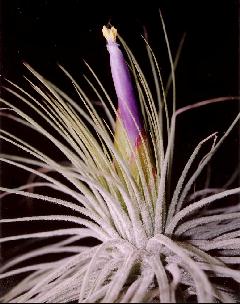
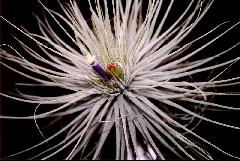
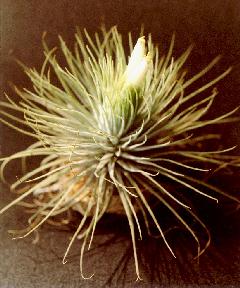
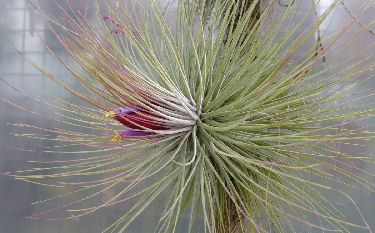
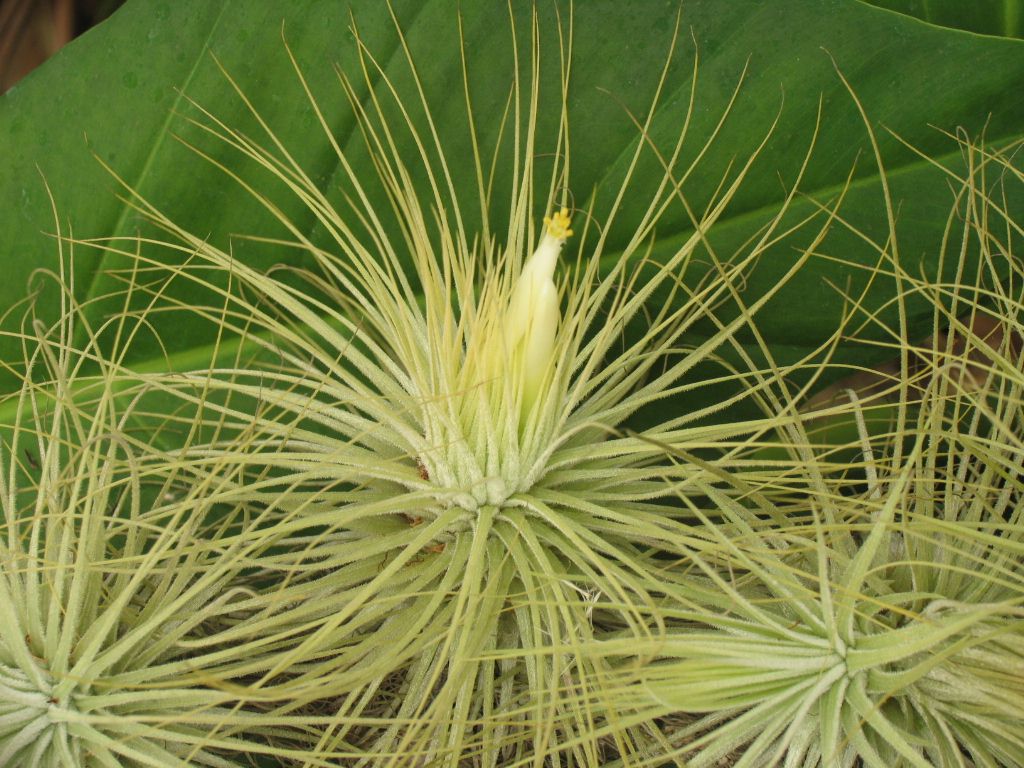
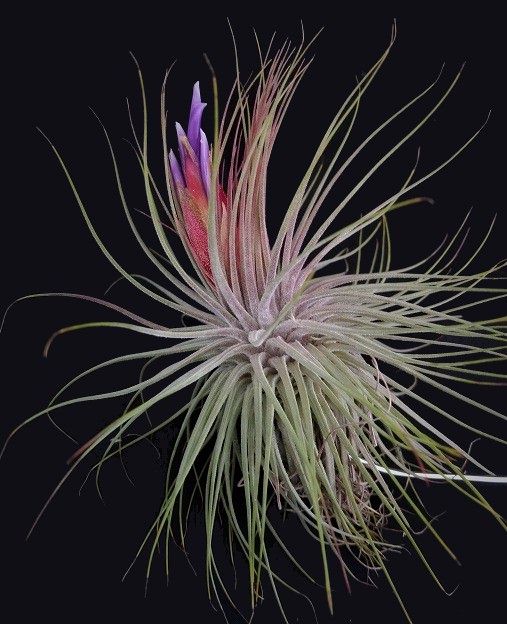
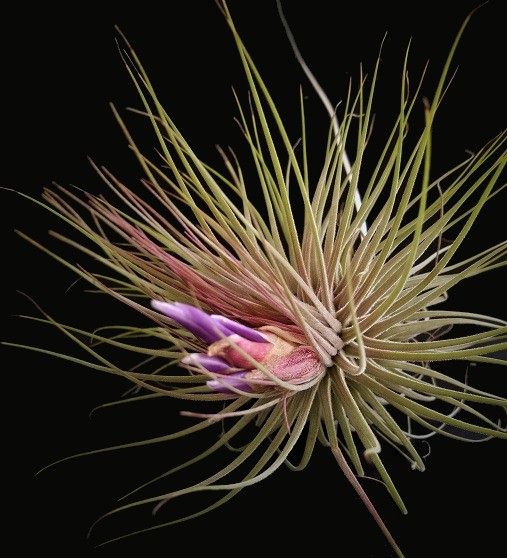
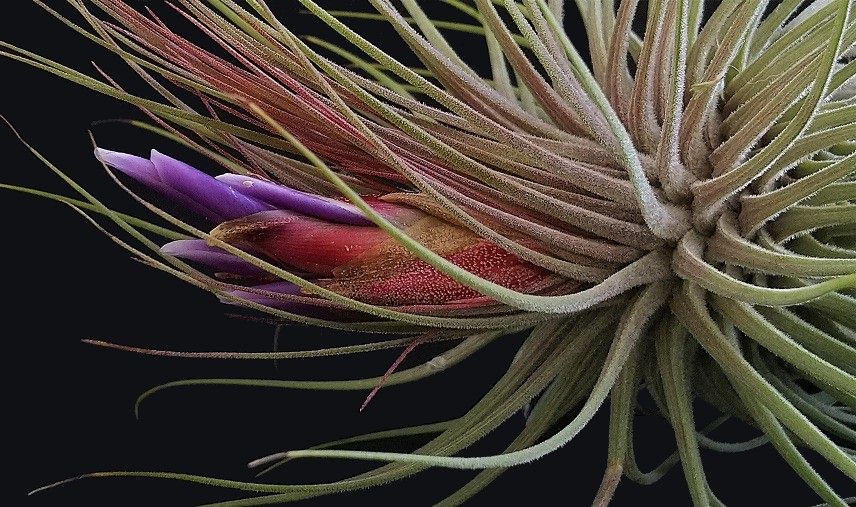
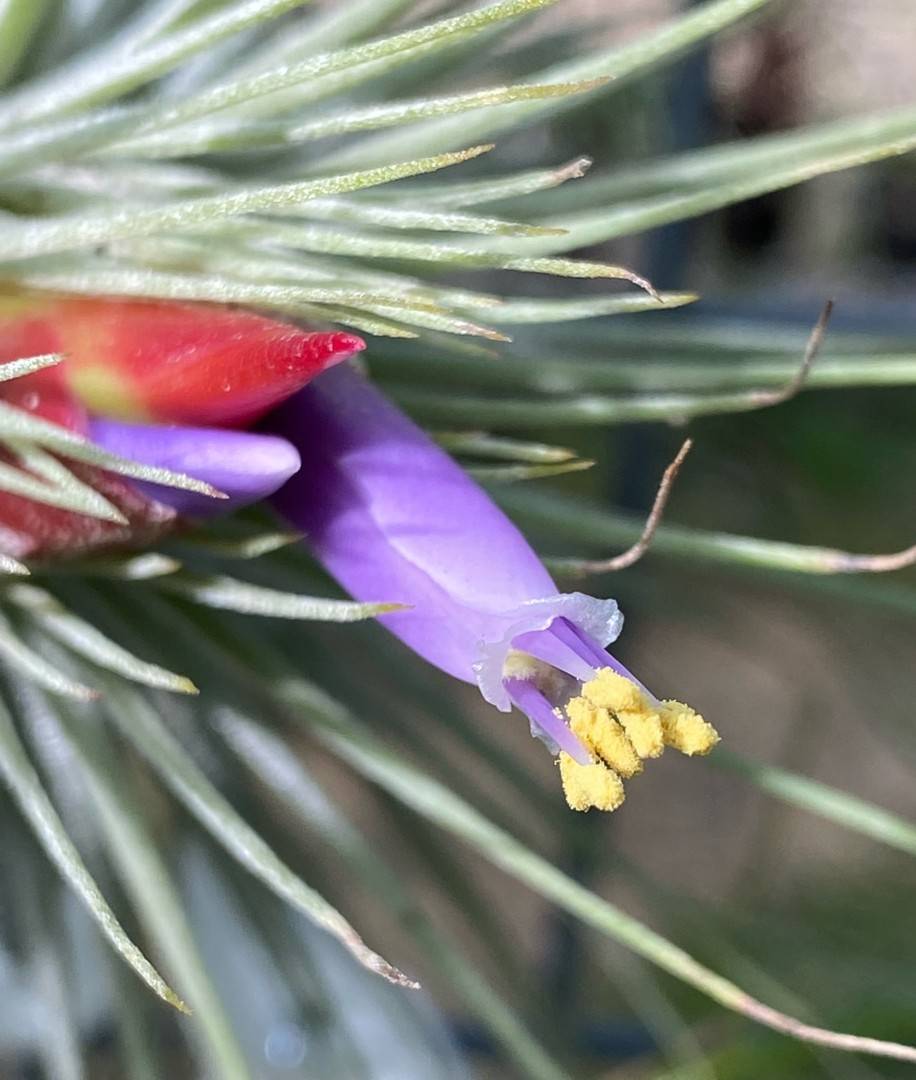
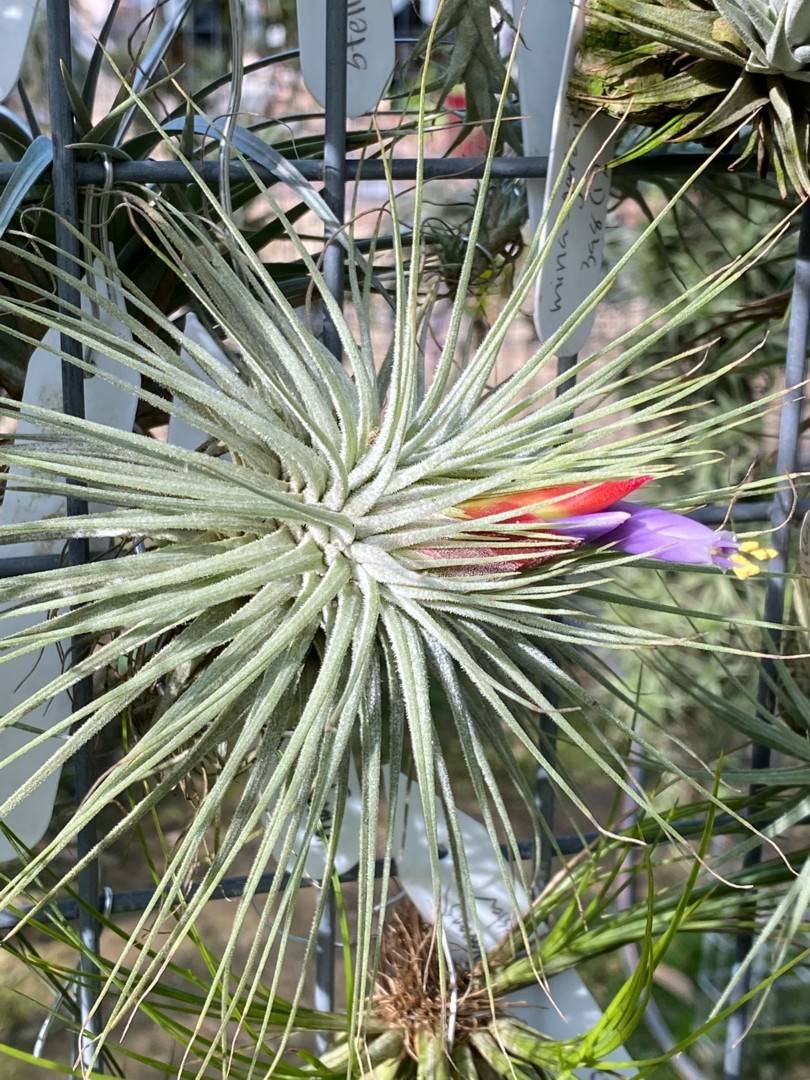
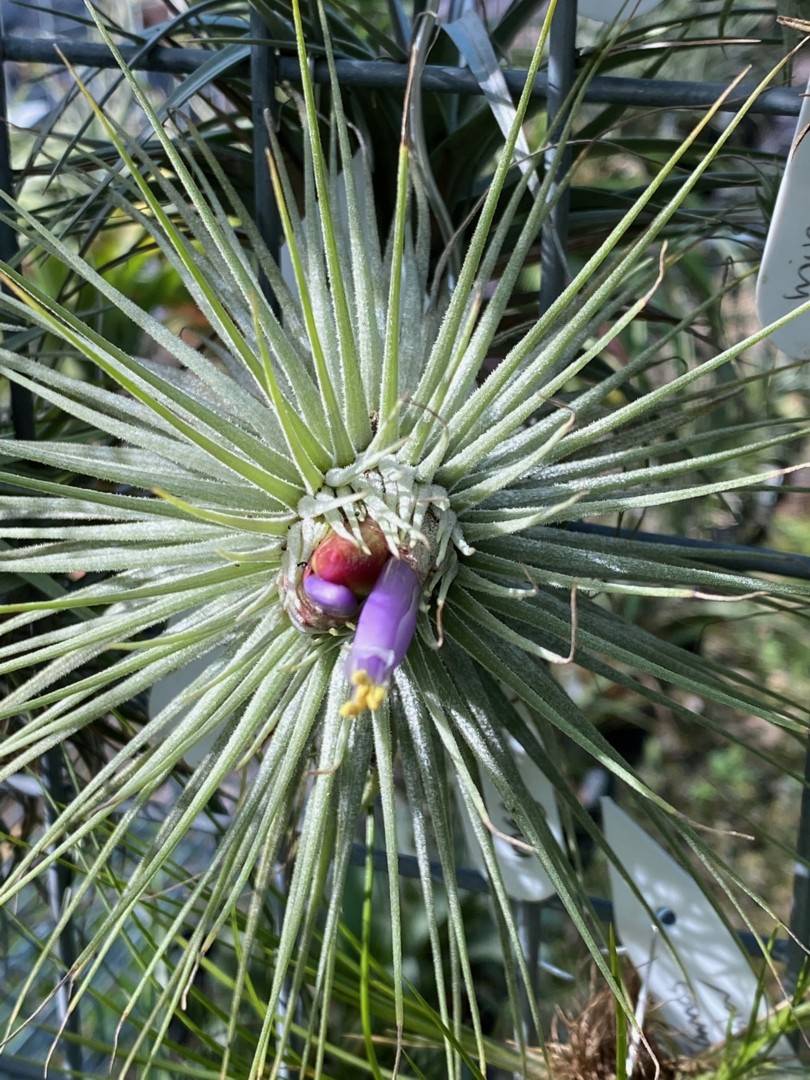
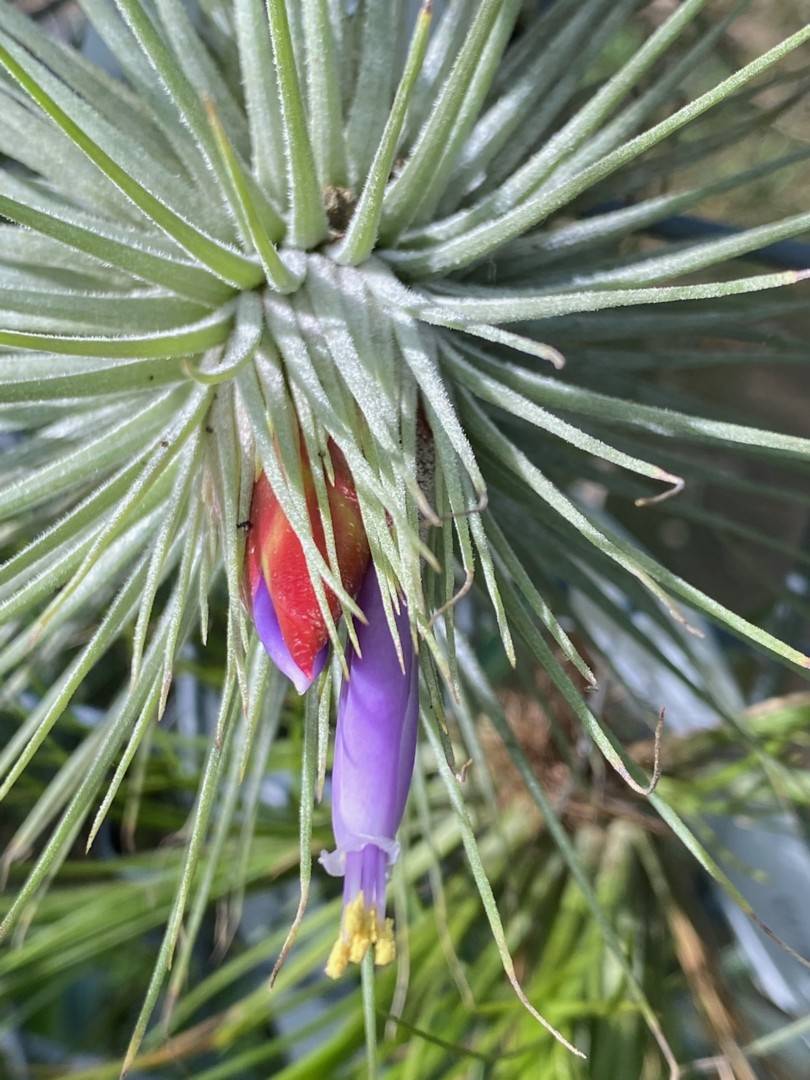
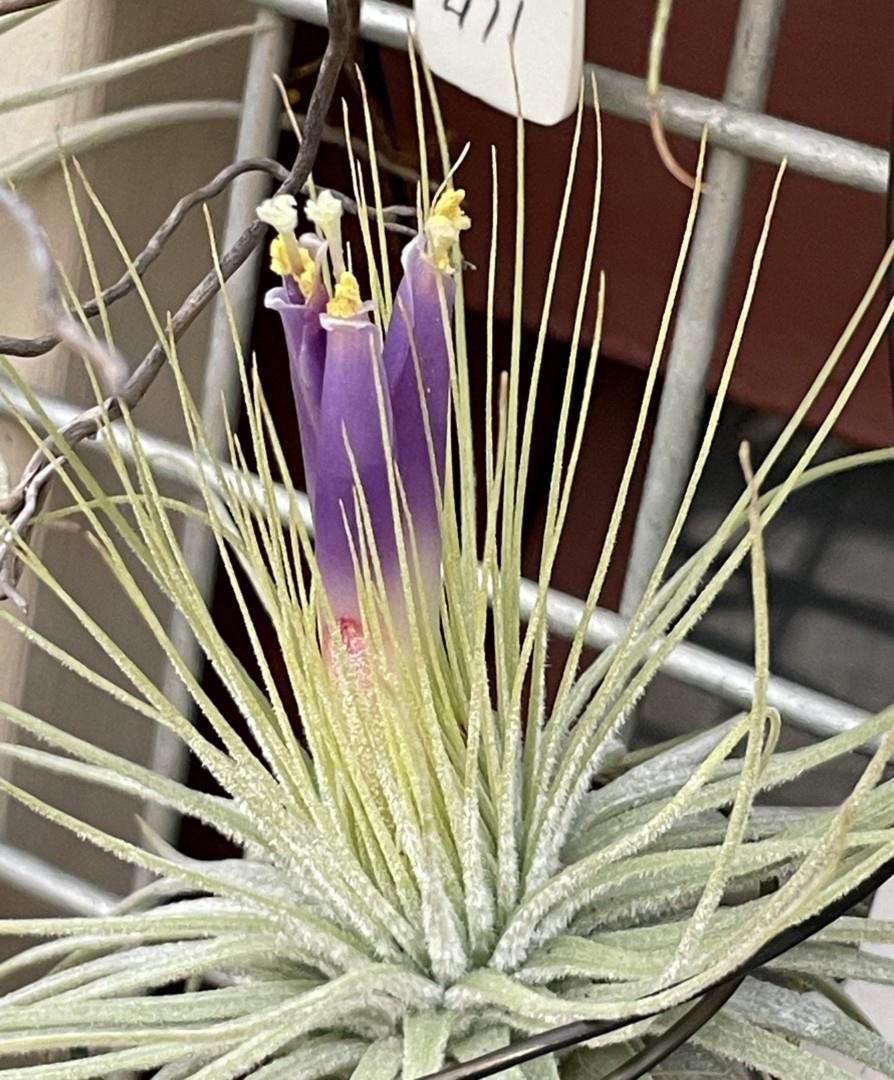
By L. B. Smith, Phytologia 19: 287.1970.
TILLANDSIA MAGNUSIANA Wittm. Bot. Jahrb. 11: 66. 1901.
T. plumosa sensu Mez, DC. Mon. Phan. 9: 735. 1896; L. B. Smith, North American Flora 19: 153. 1938, in part, not as to type.
T. plumosa var. magnusiana (Wittm.) Rohweder, Univ. Hamburg, Abh. Geb. Auslandsk. 61, Reihe C, Naturviss. 18: 80. 1956.
SCAPE almost none. INFLORESCENCE typically 2-flowered. FLORAL BRACTS 25-35 mm long, much exceeding the sepals. SEPALS 15-18 mm long; petals 35-40 mm long; stamens exserted.
The leaves of Tillandsia magnusiana and of the earlier T. plumosa Baker are practically indistinguishable, both having nearly setaceous blades and very fine linear spreading scales. Typical T. plumosa has a distinct scape but in some specimens it is nearly lacking as in T. magnusiana.
Baker described the type and only specimen of his T. plumosa as lacking petals. Mez added a Karwinsky collection to the citation of T. plumosa and undoubtedly on this basis changed the description of the floral bracts from about equaling the sepals to much exceeding them. He also added that the petals were violet, tubular-erect, and shorter than the stamens.
Actually true T. plumosa combines a distinct scape, short floral bracts, and short yellow-green petals that exceed the stamens. All of this was strikingly illustrated by flowering plants in the live collection of Alfred Blass vhen I visited him in Munchen. Hopefully colored illustrations of the two species will yet be published, but it is necessary to place the correction on record now.
From Baker 1889
186. T. MAGNUSIANA Wittm. in Engl. Jahrb. xi. 66,
Leaves densely rosulate; subulate from a linear base 1/8 in. broad, 3-4 in. long, densely clothed with spreading lanceolate lepidote scales.
Flowers forming a small ovoid capitulum in the centre of the rosette;
flower-bracts oblong, 1-1.5 in. long.
Sepals ovate, acute, 2/3 in. long.
Petals violet, three times as long as the sepals.
Hab. Mountains of Guatemala, alt. 4000-5000 ft., Lehmann 1467!
From Mez 1935
115. T. Magnusiana Wittm. in Englers Bot. Jahrb. XI. (1901) 66.
Usque ad 0.15 m alta, saepissime humilior, globulos griseos arboribus adhaerentes formans. Folia innumera, recurvata, usque ad 0.13 m longa, angustissime lineari-subuliformia, lepidibus maximis pruinosa. Scapus plane nullus, sed inflorescentia haud adeo profunde nidulans ac in specie praecedente, vero minute ultra foliorum centrum elata. Inflorescentia perpauciflora, corymbosa, capituliformis, simplicissima, quaquaverse florifera; bracteis submembranaceis, stricte erectis imbricatisque, dorso lepidotis, late ellipticis, acutis, sepala longe superantibus. Flores erecti, certe 40 mm vel ultra longi; sepalis liberis, submembranaceis vel tenuiter coriaceis, glabris vel parce lepidotis, ovalibus. Petala violacea, tubulose erecta, quam stamina breviora.
Mexico: bei Tehuacan (Liebmann n. 3, Purpus) ; San Luis Tultitlanapa bei Oaxaca (Purpus n. 3393) ; bei Orizaba (Muller n. 812) ; ohne Standortsangabe (Schmitz n. 516). Guatemala (Lehmann n. 1467). Honduras (Scherzer).
Detail from McVaugh in Flora Galiciana 1989
Tillandsia magnusiana Wittm. Bot. Jahrb. 11: 66. 1889.
Tillandsia plumosa sensu L. B. Smith, N. Amer. Flora 19: 153, in part. 1938, not T. plumosa Baker, 1888.
On trees, in Nueva Galicia in pine-oak forest, growing on the undersides of oak branches, 1800-1900 m (elsewhere reported from 1100-1600 m), flowering ?Jan?Mar, collected in over-mature fruit in late Apr.
Jal., Oax., Chis.; Centr. Amer. (Guatemala, Lehmann 1457, GB, the holotype).
Between Ayutla and Mascota, near summits "7-8 road-miles" NW of Los Volcanes, abundant (McVaugh 12191, det. Smith, 1970, and det. J. Utley, 1985).
In habit and indument very like Tillandsia plumosa; see a note under that species;
blades 3-5 mm wide at base, soon involute;
scape essentially wanting, the inflorescence sessile, dense, 1-3-flowered;
floral bracts ovate, acute or cuspidate, 25-35 mm long, much exceeding the sepals, not keeled, thin, nerved, lepidote;
sepals ovate, broadly acute or obtuse, 15-18 mm long, glabrous, not keeled;
petals 35-40 mm long, violet or "amethyst" (G);
stamens exserted;
fruit cvlindric to ellipsoid, up to 4 cm long, about equalling the floral bracts.
Although T. magnusiana and T. plumosa are superficially very similar, they are assigned by Smith (in Smith & Downs, 1977) to different subgenera because the stamens in the former are exserted from the corolla at anthesis, but in the latter they are included. Studies by Gardner (1982, p. 21) indicated that this distinction is an artificial one that cuts across natural groups.